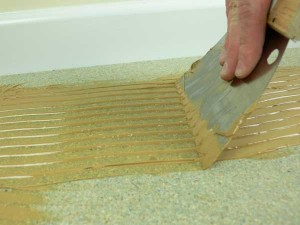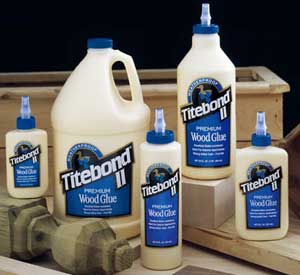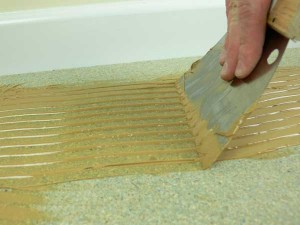Have you ever wondered if wood glue is suitable for bonding bamboo? Well, you’re in the right place! Today, we’re diving into the topic of whether or not wood glue works on bamboo.
When it comes to DIY projects or repairs involving bamboo, choosing the right adhesive is crucial. You may have heard that wood glue is a versatile option, but does it truly hold up when it comes to bonding bamboo? Let’s find out!
Whether you’re a crafty DIY enthusiast or simply curious about different adhesive options, we’ll explore the compatibility of wood glue and bamboo. So, let’s roll up our sleeves and discover the truth behind this fascinating question!

Does Wood Glue Work on Bamboo?
Bamboo is a versatile and sustainable material that is gaining popularity in various industries, including furniture making, flooring, and even construction. However, if you are considering working with bamboo, you may be wondering if traditional wood glue is suitable for bonding bamboo pieces together. In this article, we will explore the effectiveness of wood glue on bamboo, provide tips for successful bonding, and discuss alternative adhesive options.
The Science Behind Wood Glue on Bamboo
Wood glue, also known as carpenter’s glue or PVA glue, is a popular adhesive used for joining wood pieces together. It works by creating a tight bond through the process of evaporation. As the glue dries, the water content evaporates, leaving behind a strong and durable bond. When it comes to using wood glue on bamboo, the effectiveness of the adhesive depends on several factors.
Firstly, the surface of the bamboo must be properly prepared. Bamboo has a smooth and dense surface, which can hinder the penetration of the glue. To enhance adhesion, it is recommended to lightly sand the surface with sandpaper or roughen it with a wire brush before applying the glue. This will create tiny grooves that allow the glue to penetrate and create a stronger bond.
Secondly, the type of wood glue used is crucial. It is important to select a wood glue that is suitable for bonding porous materials like bamboo. A waterproof or exterior-grade wood glue is typically the best choice for bamboo as it provides better resistance to moisture and temperature changes. Always follow the manufacturer’s instructions for the specific wood glue being used and allow sufficient drying time for the adhesive to fully cure.
The Benefits of Using Wood Glue on Bamboo
Wood glue offers a range of benefits when used on bamboo. Firstly, it provides a strong and durable bond, creating a secure connection between bamboo pieces. This is especially important for structural applications where the strength and stability of the joinery are crucial.
Additionally, wood glue is easy to work with and requires minimal tools and equipment. It can be applied using a brush or spreader, and excess glue can be easily wiped away with a damp cloth before it dries. This makes it a convenient option for both professionals and DIY enthusiasts working with bamboo.
Furthermore, wood glue is a cost-effective adhesive option compared to specialized bamboo adhesives. It is readily available in most hardware stores and can be purchased in various sizes to suit different project requirements. This makes it a versatile choice for small-scale projects or applications where bamboo is used alongside other materials.
Tips for Successful Bonding with Wood Glue
To ensure successful bonding between bamboo pieces using wood glue, here are some tips to keep in mind:
- Prepare the surface: Sand or roughen the surface of the bamboo before applying the glue to enhance adhesion.
- Apply the glue evenly: Use a brush or spreader to apply the wood glue evenly on both surfaces that are being joined.
- Minimize excess glue: Remove any excess glue with a damp cloth before it dries to maintain a neat and clean bond.
- Apply pressure: Securely clamp or weight down the bonded pieces to ensure even pressure distribution and a strong bond.
- Allow sufficient drying time: Follow the manufacturer’s instructions for drying time to ensure the adhesive cures properly.
Alternative Adhesive Options for Bamboo
While wood glue is a commonly used adhesive for bonding bamboo, there are other options available that may be more suitable for specific applications or project requirements.
Epoxy Adhesive
Epoxy adhesive offers excellent strength and durability, making it an ideal choice for structural applications or situations where enhanced water and heat resistance are required. Epoxy is a two-part adhesive that requires mixing before application. It creates a strong chemical bond and can be used on various materials, including bamboo.
One drawback of epoxy adhesive is its longer curing time, which may require overnight drying. It is also more expensive than wood glue and requires careful handling and mixing to ensure proper adhesion.
Bamboo Adhesive
Specialized bamboo adhesives are specifically designed for bonding bamboo surfaces. These adhesives are formulated to penetrate and bond with bamboo’s unique structure, providing excellent strength and durability. They often have a higher moisture resistance than wood glue.
Bamboo adhesives can be particularly beneficial when working with laminated bamboo or bamboo flooring, where a specialized adhesive is needed to ensure a long-lasting bond. However, they may be harder to find and more expensive than traditional wood glue.
Contact Cement
Contact cement is a popular adhesive choice for bonding bamboo that does not require clamping or additional pressure. It is applied to both surfaces being joined and allowed to dry before being pressed together. The adhesive creates an instant bond upon contact, making it suitable for projects that require immediate strength.
It is important to note that contact cement can be more challenging to work with due to its strong initial bonding. It requires careful alignment and accurate placement as repositioning is difficult once the surfaces are brought together. Ventilation is also crucial when working with contact cement due to the strong odor and potential health risks associated with the adhesive.
In conclusion, wood glue can be an effective adhesive for bonding bamboo, but proper surface preparation and the selection of the right type of glue are essential for successful bonding. Consider the specific application, strength requirements, and moisture resistance when choosing an adhesive for your bamboo project. Remember to follow the manufacturer’s instructions and best practices for optimal results.
Key Takeaways: Does Wood Glue Work on Bamboo?
- Yes, wood glue can be used on bamboo.
- Make sure to choose a high-quality wood glue for better adhesion.
- Apply the wood glue evenly on the bamboo surface.
- For the best results, clamp the glued parts together and let them dry for the recommended time.
- Wood glue provides a strong bond for bamboo projects if used correctly.
Frequently Asked Questions
Welcome to our Frequently Asked Questions section where we answer common queries about using wood glue on bamboo. Whether you’re working on a DIY project or repairing bamboo furniture, we’ve got you covered. Read on to find answers to your questions!
1. Can you use wood glue on bamboo?
Yes, wood glue can be used on bamboo. Wood glue is known for its strong adhesive properties, making it suitable for bonding different types of wood, including bamboo. The key to a successful bond is choosing the right type of wood glue and ensuring proper surface preparation.
When using wood glue on bamboo, it’s essential to select a high-quality wood glue that is designed for both porous and non-porous surfaces. Before applying the glue, make sure the bamboo surfaces are clean and free from any dust, dirt, or oils. Apply a thin, even layer of wood glue on both surfaces and clamp them together for the recommended drying time to achieve a strong and durable bond.
2. What type of wood glue should I use for bamboo?
For bonding bamboo, it is recommended to use a waterproof wood glue. Since bamboo is naturally moisture-resistant, a waterproof wood glue will provide a strong and long-lasting bond that can withstand environmental factors like humidity or occasional exposure to water.
Look for wood glues that specifically mention waterproof or water-resistant properties on the label. These types of wood glues are formulated to withstand moisture and ensure a reliable bond between bamboo surfaces.
3. Can wood glue be used for bamboo flooring installation?
No, wood glue is not typically used for bamboo flooring installation. Bamboo flooring is usually installed using tongue and groove or click-lock systems, where the bamboo planks are interlocked rather than glued. Gluing bamboo flooring can restrict natural expansion and contraction, leading to buckling or other issues.
However, if you encounter any loose or damaged bamboo flooring boards, you can use a small amount of wood glue to secure them back in place. It’s important to follow the manufacturer’s instructions and only use glue sparingly to avoid any complications.
4. How long does wood glue take to dry on bamboo?
The drying time of wood glue on bamboo can vary depending on the type and brand of wood glue used, as well as environmental conditions. On average, most wood glues require 24 hours for a complete bond to develop.
It’s important to follow the instructions provided by the wood glue manufacturer to ensure proper drying time. Applying pressure by using clamps or heavy objects during the drying process can help achieve a stronger bond.
5. Can wood glue be used to repair bamboo furniture?
Yes, wood glue can be used to repair bamboo furniture. If you have a loose joint or broken piece in your bamboo furniture, applying wood glue can help reattach or reinforce the damaged area.
First, clean the surfaces to be glued and remove any old glue or debris. Apply a thin layer of wood glue onto both surfaces and press them firmly together. Wipe off any excess glue that squeezes out. Allow the glued area to dry and solidify according to the manufacturer’s recommendations before using the furniture again.

Does wood glue really work?
Summary
So, does wood glue work on bamboo? The answer is yes! Wood glue can effectively bond bamboo together, making it a suitable adhesive for bamboo projects. Just remember to roughen the surface and apply even pressure for the best results. However, it’s important to note that wood glue may not be as strong as other types of adhesive for bamboo, like epoxy. So, if you’re working on a heavy-duty project, it might be worth considering alternative options.
In conclusion, wood glue can be used to bond bamboo, but it may not be the strongest option. Remember to follow the proper preparation and application techniques for the best results. Happy crafting!
